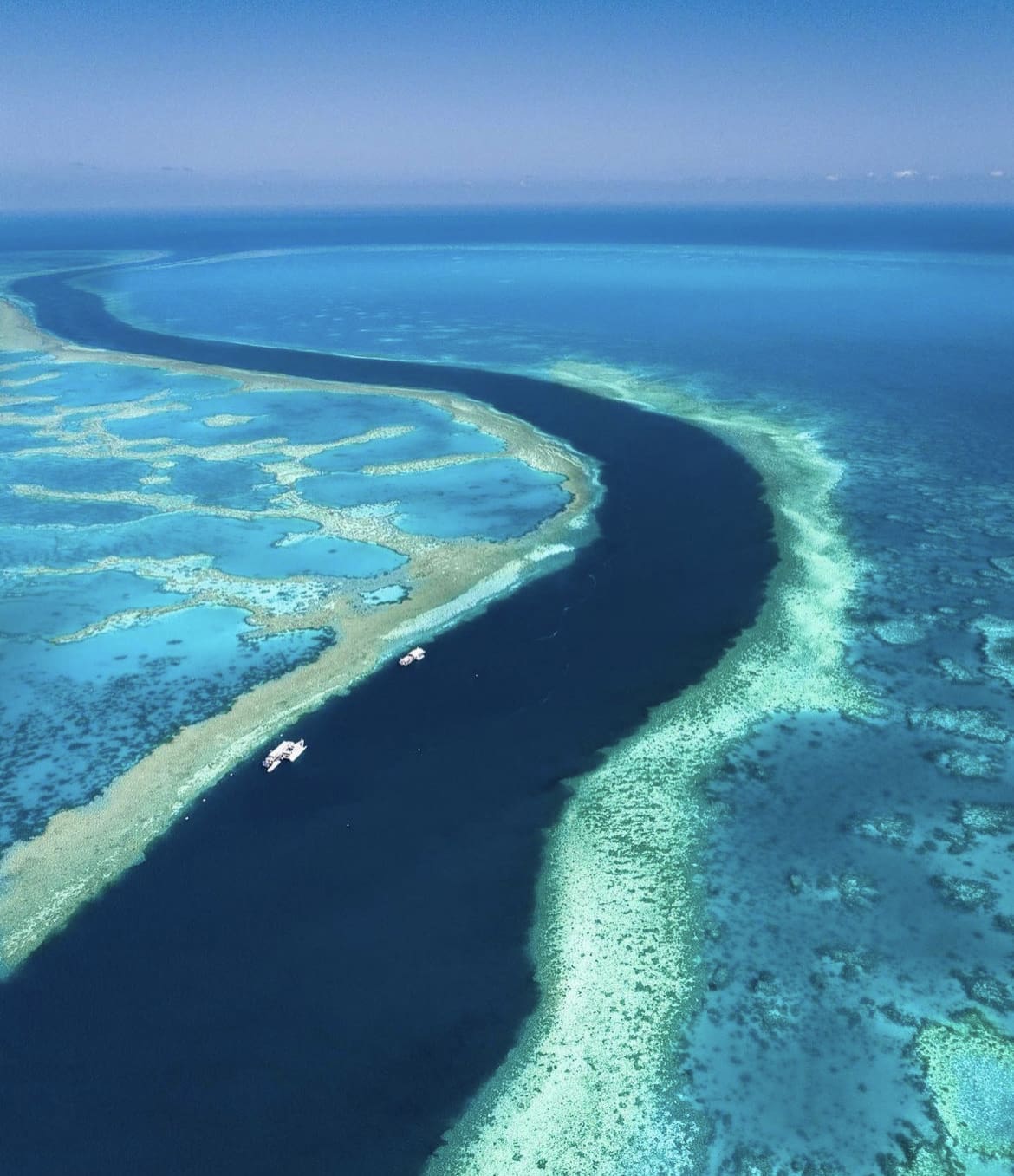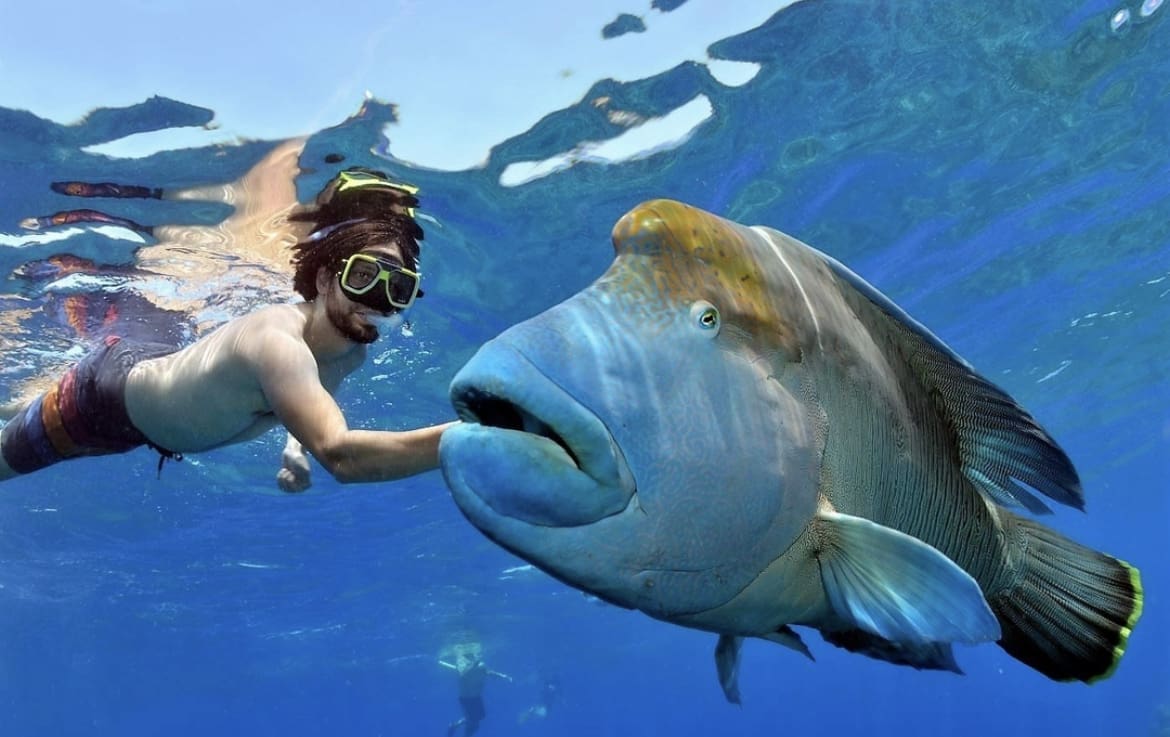Have you ever dreamed of diving into an underwater world, teeming with vibrant life and color? The Great Barrier Reef, a dazzling marine wonder, beckons travelers from all corners of the globe.
This article is your comprehensive guide to planning the perfect visit to this natural wonder, with insider tips on the best times to explore its underwater splendors.
The Great Barrier Reef
Spanning over 2,300 kilometers along the Australian coast, the Great Barrier Reef holds the title of the world’s largest coral reef system. This UNESCO World Heritage site is not just a single reef but a sprawling network of over 2,900 individual reefs and 900 islands. It’s a hotspot of biodiversity, home to thousands of species of fish, hundreds of types of coral, and a plethora of other marine life.
But the Great Barrier Reef is more than just a tourist destination; it’s an irreplaceable ecosystem, playing a crucial role in the marine environment. Conservation efforts are ongoing to protect this fragile ecosystem from threats like climate change and coral bleaching. When planning your visit, remember that you’re not just a tourist but a steward of a global treasure.

Weather Patterns and Seasons
The Great Barrier Reef’s tropical climate means warm temperatures year-round, but there are significant variations across seasons that can influence your experience.
- Summer (December to February): This is the wet season, characterized by higher humidity and occasional tropical showers. The water temperatures are warm, making it ideal for snorkeling and diving. However, this is also the season for stingers (jellyfish), and swimming without a stinger suit is not advised.
- Autumn (March to May): The weather starts to cool, and the humidity drops. This is a great time to visit, as the water is still warm, and the stinger threat diminishes.
- Winter (June to August): Offering comfortable temperatures and clear skies, winter is prime time for whale watching. The cooler water temperatures bring different species of marine life closer to the surface.
- Spring (September to November): As the temperatures begin to rise, the water becomes perfect for extended snorkeling and diving sessions. Spring is also the breeding season for many species, making it an exciting time for wildlife enthusiasts.
Understanding these seasonal dynamics is crucial for planning your visit. Whether you’re seeking the perfect dive conditions or aiming to avoid the crowds, timing your trip according to the Great Barrier Reef weather and seasons can significantly enhance your experience.

Best Time for Marine Life Exploration
The allure of the Great Barrier Reef lies in its incredible marine life. Depending on the time of year, your experience exploring this underwater paradise can vary dramatically.
- Snorkeling and Diving: The best visibility underwater is from June to October, during the Australian winter and spring. This period offers clearer waters, making it ideal for snorkeling and diving. You’ll get a chance to witness the reef’s vibrant coral and fish in all their glory.
- Marine Life: Different seasons bring different species to the forefront. Summer and autumn are great for turtle watching, as they come ashore to nest. Winter brings dwarf minke and humpback whales, offering an unparalleled opportunity for whale watching tours.
Choosing the right time for your visit depends on what you wish to see and experience. Whether it’s snorkeling amidst the colorful corals, diving to discover hidden underwater landscapes, or observing the majestic dance of whales, timing your visit is key to a once-in-a-lifetime Great Barrier Reef adventure.

Planning Your Trip
Embarking on a journey to the Great Barrier Reef, nestled off the coast of Queensland, Australia, requires some essential planning. This magical destination is accessible from various points, such as Cairns, Townsville, and Port Douglas, each offering unique experiences and access to different parts of the reef.
- Travel and Accommodation: When planning your trip, consider the type of experience you’re looking for. Cairns is a vibrant tourist hub with a range of accommodation options, from luxury resorts to budget hostels. For a quieter experience, consider staying in Port Douglas or one of the many idyllic islands dotting the reef.
- Tours and Activities: There’s no shortage of tours and activities catering to all types of travelers. Whether you’re an experienced diver looking for challenging sites or a family seeking a snorkeling adventure, you’ll find an array of options. Eco-friendly tours and conservation experiences are also available, offering a deeper understanding of the reef and its inhabitants.
- Travel Tips: Remember to book your tours and accommodation well in advance, especially if you’re planning to visit during the peak season. And while exploring this incredible ecosystem, always follow eco-friendly practices to minimize your impact on the natural environment.

Adventure Activities and Tours
The Great Barrier Reef is a playground for adventure seekers. Beyond the popular activities of snorkeling and diving, there’s a myriad of ways to experience the reef’s majestic beauty.
- Diving and Snorkeling Tours: Dive into the depths of the Coral Sea to explore famous sites like the Cod Hole, Ribbon Reefs, and the SS Yongala wreck. For those less inclined to dive, snorkeling provides an equally thrilling experience, with vibrant coral gardens and playful marine life just below the surface.
- Sailing and Island Hopping: Charter a sailboat or join a cruise to explore the Whitsunday Islands. Whitehaven Beach, with its pristine silica sand and turquoise waters, is a must-visit.
- Fishing Expeditions: For anglers, the reef’s outer edges offer some of the best game fishing opportunities for species like black marlin and sailfish.
When to Avoid the Crowds
For those seeking a more secluded experience, timing your visit outside the peak tourist season is key.
- Avoiding Peak Season: The busiest times are during Australian school holidays and the northern hemisphere’s winter months. Consider visiting in late spring (October to November) or late autumn (May to June) for fewer crowds.
- Enjoying the Reef in Solitude: During these off-peak times, you’ll not only avoid the crowds but also enjoy more personalized tours and potentially lower accommodation rates. The reef’s beauty remains undiminished, and you’ll have more opportunities to interact with local guides and learn about the reef’s ecosystem.
By carefully choosing your travel time, you can experience the Great Barrier Reef’s wonders in a more intimate setting, making your adventure all the more memorable.

Preparing for Your Visit
Your journey to the Great Barrier Reef isn’t just about picking the right time; it’s also about being well-prepared. Here are some essential tips to ensure your trip is as enjoyable and hassle-free as possible:
- Packing Essentials: Lightweight clothing, swimwear, and a good sun hat are must-haves. Don’t forget sunscreen (preferably reef-safe), sunglasses, and a waterproof camera to capture your underwater experiences.
- Health Considerations: Ensure you’re physically prepared for activities like snorkeling and diving. It’s always a good idea to have a basic first-aid kit and be aware of any personal health needs or medications you might require.
- Local Customs and Etiquette: Understanding and respecting local customs and practices in Australia enhances your travel experience. Always follow guidelines provided by tour operators, especially those related to environmental conservation.
- Travel Tips: While planning your itinerary, consider factors like airport proximity and available flight options to the various access points of the Great Barrier Reef. This ensures a smooth travel experience, allowing you more time to enjoy the beauty of the reef.
The Great Barrier Reef Beyond the Sea
The adventure doesn’t end at the water’s edge. Queensland offers a plethora of on-land experiences that complement your reef adventure:
- Tropical Rainforests: Venture into the Daintree Rainforest, the oldest rainforest on the planet, for a change of scenery. Here, you can immerse yourself in ancient landscapes and rich Aboriginal culture.
- Cultural Experiences: Towns like Cairns and Port Douglas offer vibrant cultural scenes, with local markets, art galleries, and seafood restaurants. Don’t miss the opportunity to taste local delicacies and shop for unique souvenirs.
- Adventure Activities: For those looking for more adrenaline-pumping experiences, Queensland offers bungee jumping, skydiving, and white-water rafting.

How To Get To The Great Barrier Reef
The reef is situated in the state of Queensland, which is in the northeastern part of Australia. It runs almost parallel to the Queensland coast, from the town of Bundaberg up to the tip of the Cape York Peninsula.
Major Access Points
- Cairns: Often considered the gateway to the Great Barrier Reef, Cairns is one of the most popular starting points for reef tours and excursions. It has an international airport, making it easily accessible for travelers from around the world.
- Townsville: This city offers a more laid-back approach to exploring the reef. It hosts a range of tour options and is home to the world-renowned Museum of Underwater Art.
- Port Douglas: A picturesque town north of Cairns, Port Douglas is a great base for luxury reef experiences and family-friendly adventures.
- The Whitsunday Islands: Accessed from Airlie Beach, the Whitsundays are a group of 74 islands that provide a stunning setting for sailing, snorkeling, and diving trips.
Reaching These Access Points
- By Air: The most convenient way to reach the Great Barrier Reef is by flying into one of the airports near these access points. Cairns and Townsville have international airports, while Hamilton Island in the Whitsundays has a domestic airport.
- By Road: For those who prefer a road trip, driving along the Queensland coast offers spectacular views and the opportunity to explore smaller towns along the way. Car rentals are available in major cities and towns.
- By Rail: Queensland Rail offers services that run along the coast, providing a scenic and relaxing way to reach the reef.
Once you arrive at your chosen access point, a variety of tours and transport options are available to take you out to the reef itself, ranging from day trips on speedboats to multi-day sailing excursions.
Whether you fly directly to a major city like Cairns or choose a more adventurous route, getting to the Great Barrier Reef is part of the excitement. Each route offers its own unique experiences and sights, making the journey to the reef as memorable as the time you’ll spend there.
